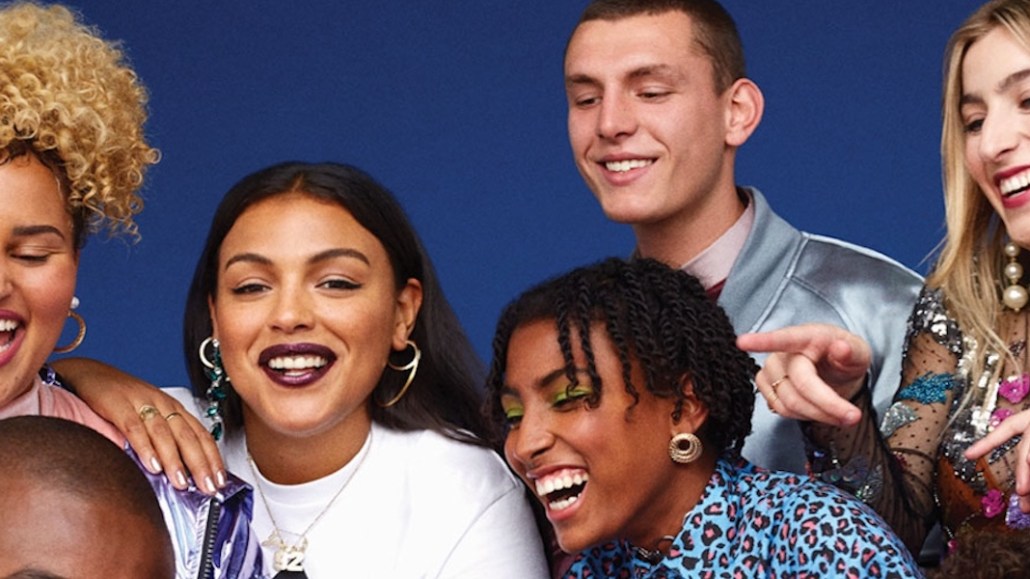
To see where British fast-fashion retailer Asos is spending the most of its resources, download its mobile app.
Built in-house, the app has 10 million downloads according to the company, and it’s also the focus of the retailer’s latest technology investments, coming from its 900-person tech team, which Asos plans to grow by another 200 next year. The app is home to features like AI-driven product search, mobile payments and a fit analytics function, all meant to put some muscle behind the often finicky mobile shopping experience.
Most recently, Asos rolled out a visual search tool to U.K. iPhone app users that lets shoppers take a photo of a product they like in-app, and it pulls similar items from a pool of 85,000 product images. The feature will be introduced to Android and international markets next, including the U.S., wear Asos has invested $40 million in building out a distribution center.
“Our number one priority is: We need to build experiences that capitalize on mobile,” said Rich Jones, Asos’s head of product and UX. “We’re designing experiences that are essentially right for the customers’ devices because their entire lives are here. How do we make sure our experience matches that?”
It helps that the majority of Asos’s traffic and conversions are happening there. Globally, 70 percent of traffic and 58 percent of purchases happen on mobile. In the U.K., where Asos is headquartered, those figures creep up, to 80 percent and 70 percent for traffic and conversions, respectively.
Jones said that when figuring out how to improve the mobile app, the technology team turns to customer pain points and figures out how to solve them. One of Asos’s strengths is its vast inventory of 85,000 products from 200 brands, and it’s resonating with customers. In its latest earnings report for the third quarter of 2017, retail sales were up 32 percent, to $859 million, putting it on track to hit $103 million in profits for the year. For their most recent results, Asos outpaced competitors like Zara, where sales rose 17 percent, and H&M, which saw a 9 percent sales bump.
But while scrolling through endless product pages is suitable for desktop, such a dense assortment is difficult to digest on mobile, a problem Jones and his team set out to fix.
“It’s frustrating to find products. How do we remove that friction? How do we solve the ‘I don’t know what to wear’ problem? We want to do the heavy lifting,” said Jones. “We can show you 10,000 products if you just type in ‘dresses,’ but we want to get to the point where we can show you five or 10 that really gel with you and understand you.”
Jones thinks visual search will help solve the problem of narrowing down assortment and getting customers straight to the products they’re looking for. For example, a search for “pink shoes” on the Asos app pulls up close to 500 results, including a mix of peach loafers and pink glitter platforms. But when using visual search, a photo of hot pink booties gives you 100 results, closely matching in style and shade.

The visual search tool in the Asos app
Still, Jones admitted there’s a learning curve around that tool when it comes to customer behavior — for as much as retailers have tested the “Shazam for retail” function, it’s not common practice yet to search by images. He also said that visual search only accounts for customers who know what it is they’re looking for. To account for those who are just in the market for something broad, like a dress, the company is using machine learning, big data and AI to personalize the app more every time it’s opened.
“Personalization and data usage have now moved to a whole different game — this is now data science and artificial intelligence,” said Asos CEO Nick Beighton, on a July call with investors. “So we have had recommendations live on our apps for several years now, which is AI using data to power customer choices. We are now doubling down on that: using data to enhance the customer experience. Every customer to come through the app is getting a better experience next time he or she comes.”
Jones said that Asos is focusing on improving its handle on personalization based on customer behavior and preferences. Right now, the company uses a third-party partner to track data, but it plans to bring it in house. The company’s next big mobile launch is AVA, a virtual assistant on mobile, which will help customers search for products and keep a profile on their demographics, including size and preferences.
“AI understands, more than anything else, feedback. Down to a click, customer behavior is the ultimate driver of AI and machine learning techniques,” said Eric Brassard, a former Saks Fifth Avenue executive and founder of AI recommendation company Propulse Analytics. “This is where the big impact of AI in a field like fashion is — it can take endless data and deliver the answers, because it simplifies it on a human-like level.”
More in Marketing

Zero-click search is changing how small brands show up online — and spend
To appease the AI powers that be, brands are prioritizing things like blogs, brand content and landing pages.

More creators, less money: Creator economy expansion leaves mid-tier creators behind
As brands get pickier and budgets tighten, mid-tier creators are finding fewer deals in the booming influencer economy.

‘Still not a top tier ad platform’: Advertisers on Linda Yaccarino’s departure as CEO of X
Linda Yaccarino — the CEO who was never really in charge.









